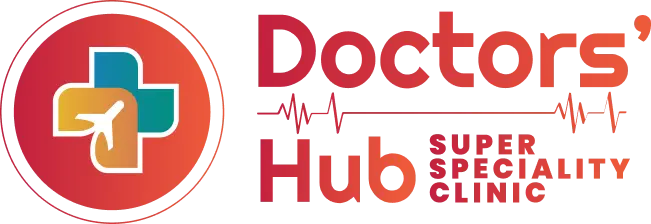When the eyes begin to move uncontrollably, it is not just distracting—it’s disorienting. For those living with nystagmus, every blink, head turn, or shift in light can bring an overwhelming sense of motion. This isn’t just a condition of the eyes; it disrupts vision, confidence, balance, and everyday life. Unlike more commonly discussed eye conditions, nystagmus eye is misunderstood, misdiagnosed, or even missed completely
This article by an ophthalmologist in Gurgaon takes a closer look at what nystagmus really means, why it happens, and how it’s treated today. Let’s explore this condition in detail and know if nystagmus can be cured.
What Is the Meaning of Nystagmus?
The term nystagmus refers to a condition where the eyes move rapidly and uncontrollably. These movements can go side to side (horizontal nystagmus), up and down (vertical), or even in a circular motion. These are not voluntary eye motions. They are automatic and often disrupt the person’s ability to focus on objects or maintain steady vision
The nystagmus meaning differs depending on when it begins and what causes it. Some people are born with it (congenital), while others develop it due to trauma, illness, or neurological conditions (acquired). The direction of the eye movement also gives doctors key diagnostic clues.
Nystagmus horizontal is the most common pattern seen, and often linked with issues in the inner ear or the brainstem.
Common Nystagmus Causes You Should Know
There isn’t just one cause of nystagmus. Instead, many conditions—ranging from birth defects to inner ear problems—can lead to this symptom. Here are some well-established nystagmus causes:
- Congenital disorders: Some babies are born with nystagmus. It usually shows up within the first two to three months of life. Sometimes it’s linked to conditions like albinism or congenital cataracts.
- Inner ear dysfunction: The inner ear controls balance. A disturbance here, such as labyrinthitis or Meniere’s disease, can trigger nystagmus.
- Neurological conditions: Multiple sclerosis, stroke, or head injury can affect the brainstem or cerebellum, where eye movement is controlled.
- Medicines or substance use: Sedatives, alcohol, or anti-seizure medicines (sometimes) cause temporary or permanent nystagmus.
- Vitamin deficiency: Low levels of thiamine (vitamin B1) or other nutrients have been linked with this eye condition, especially in chronic alcohol users.
- Eye muscle problems: In rare cases, direct injury to the muscles that control eye movement can result in involuntary motions.
Recognizing Nystagmus Symptoms in Daily Life
People do not recognize nystagmus as an eye problem right away. The symptoms may seem subtle at first. Over time, they can grow obvious.
Some of the most common nystagmus symptoms include:
- Blurry vision or difficulty focusing
- Feeling like the world is “moving” or shaking
- Problems with depth perception
- Poor night vision
- Needing to turn the head to see better (known as a “null point”)
These symptoms for some people can come and go, especially if the nystagmus is acquired. In some people, stress or fatigue can make symptoms worse.
The Different Types of Eye Nystagmus
Doctors classify nystagmus by how it looks and when it starts. These are the main nystagmus types:
- Congenital Nystagmus: Appears at birth or in infancy. It is usually horizontal and doesn’t cause dizziness.
- Acquired Nystagmus: Develops later due to trauma or disease. Often linked to dizziness or balance issues.
- Pendular Nystagmus: The eyes move back and forth at equal speed.
- Jerk Nystagmus: One direction has a slow drift, followed by a fast corrective movement.
- Latent Nystagmus: Only appears when one eye is covered.
Each type gives doctors clues about what area of the brain or body might be affected.
How Doctors Diagnose Nystagmus?
To confirm nystagmus, doctors perform a detailed nystagmus test. It’s not just about watching the eyes move. These are some of the techniques used:
- Visual inspection: The doctor watches how the eyes move when the patient looks in different directions.
- Electronystagmography (ENG): Measures eye movements using electrodes placed around the eyes.
- Videonystagmography (VNG): Uses infrared cameras to track eye movements during balance tests.
- MRI or CT scans: Helps rule out brain damage, tumors, or other neurological issues.
- Blood tests: To check for infections or vitamin deficiencies.
These tests help to rule out other conditions and confirm the direction of nystagmus, its type, and cause.
Is Nystagmus Curable? A Look at Modern Eye Treatment in Gurgaon
One of the most common questions patients ask is, “Can nystagmus be cured?” The answer is: not always, but many forms can be managed or improved with treatment.
Nystagmus Treatment options in Delhi to manage it
- Treating underlying cause: If a brain or ear issue is causing the eye movement, treating that condition can help stop or slow nystagmus.
- Glasses or contact lenses: These (sometimes) help improve focus and reduce symptoms in some types.
- Nystagmus: Eye specialists in Delhi check your eyes and may recommend drugs like gabapentin or memantine may reduce eye motion in specific cases.
Nystagmus Surgery in Gurgaon
- Eye muscle surgery: In selected patients, surgery to reposition eye muscles can help reduce the abnormal movement. This improves vision and reduces head tilting.
- Vision therapy: Tailored exercises can sometimes help people adapt to their eye movements.
Though nystagmus treatment can’t always cure the condition, it often makes life easier and vision more stable.
Central vs Peripheral Nystagmus: What’s the Difference?
The terms nystagmus central vs peripheral refer to where in the body the problem starts.
- Central nystagmus: Caused by problems in the brain (like the cerebellum or brainstem). It often presents with other serious symptoms like slurred speech or weakness.
- Peripheral nystagmus: Originates from issues in the inner ear. This type usually causes dizziness and is more likely to improve over time or with medication.
Identifying this distinction helps eye doctors in Gurgaon create a better treatment plan.
When to See a Ophthalmologist Doctor in Gurgaon for Nystagmus?
If you or a loved one has symptoms of nystagmus, seek medical care promptly. Early diagnosis is key, especially when the condition is linked to a treatable disease.
You should contact an eye specialist in Gurgaon or an ophthalmology specialist in Gurgaon if you experience:
- Sudden involuntary eye movements
- Difficulty seeing straight ahead
- Frequent dizziness or balance issues
- A head tilt that wasn’t present before
A full check-up at a trusted eye care clinic in Gurgaon or nearby can uncover the cause and help guide treatment.
Nystagmus is more than a visual disturbance—it can affect quality of life, school performance, and emotional well-being. While many forms are not fully curable, modern nystagmus treatment options offer real relief. From early tests to advanced therapies, there is hope for those living with this condition.
At My Doctor’s Hub, patients receive detailed diagnosis and care for eye disorders, including nystagmus eye. Whether you need an eye specialist in Gurgaon, an ophthalmology specialist in Gurgaon, or simply want to explore vision solutions at an eye care clinic in Dwarka, we’re here to help you move forward with clarity.













